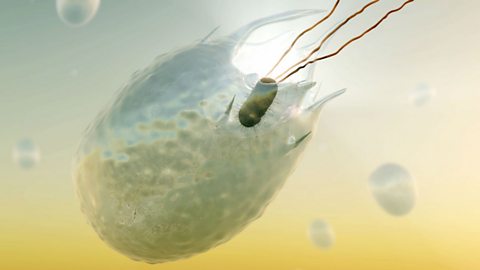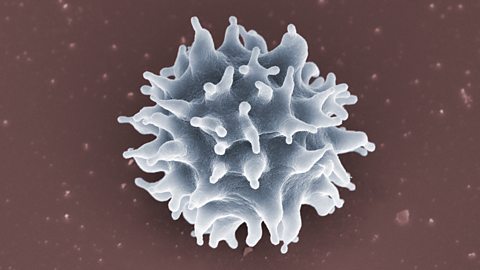The immune system of the human body in defence against disease
If pathogenMicroorganism that causes disease. pass the non-specific first line of defence they will cause an infection. However, the body has a second line of defence to stop or minimise this infection. This is called the immune systemThe body's defence system against entry of any foreign body, including pathogens and agents such as pollen grains. The role of the immune system is to prevent disease.. As a part of this there are two types of white blood cell called phagocytesCells, such as white blood cells, that engulf and absorb waste material, harmful microorganisms, or other foreign bodies in the bloodstream and tissues. and lymphocytesWhite blood cells which attack pathogens by producing antibodies..
Phagocytes

Phagocytes surround any pathogens in the blood and engulf them. They are attracted to pathogens and bind to them.
The phagocytes membrane surrounds the pathogen and enzymes found inside the cell break down the pathogen in order to destroy it. As phagocytes do this to all pathogens that they encounter, they are called 'non-specific'.
Lymphocytes

Lymphocytes are another type of white blood cell. They recognise proteins on the surface of pathogens called antigenA protein on the surface of a substance (often a pathogen) that triggers an immune response.. Lymphocytes detect that these are foreign not naturally occurring within your body and produce antibodyA protein produced by the immune system in humans (and other animals) that attacks foreign organisms (antigens) that get into the body.. This can take a few days, during which time you may feel ill. The antibodies cause pathogens to stick together and make it easier for phagocytes to engulf them.
Some pathogens produce toxinA type of natural poison produced by an organism, often as a form of protection. which make you feel ill. Lymphocytes can also produce antitoxins to neutralise these toxins. Both the antibodies and antitoxins are highly specific to the antigen on the pathogen, thus the lymphocytes that produce them are called 'specific'.